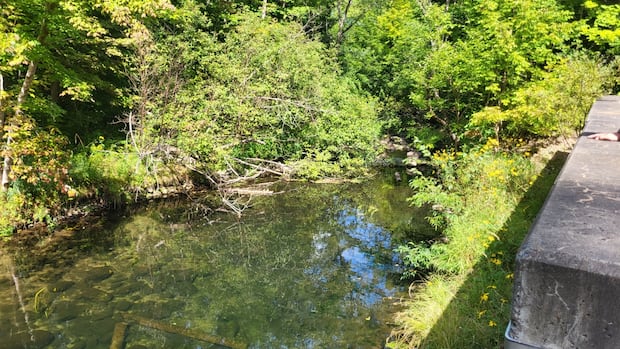With N.S. brooks and streams drying up, some fish are struggling

The ongoing drought in Nova Scotia is taking a toll on the local ecosystem, particularly impacting fish species in brooks and streams. In Cambridge, Kings County, the Rockford Brook has seen parts of it dry up, leaving trout and white suckers stranded in isolated pools of water. This situation has been ongoing for over two months, posing a threat to the well-being of these fish.
Fen Boates-Bishop, a volunteer with the Jijuktu’kwejk Watershed Alliance, expressed concern over the lack of oxygen and food in these isolated pools, leading to stress and potential harm for the fish. However, due to the woods ban in certain parts of the province, it is challenging to assess the full extent of the problem across all affected tributaries.
The ban on accessing wooded areas has hindered efforts to fully understand and address the impact of the drought on fish populations. With blistering temperatures causing water temperatures to rise above 20 C, native species like trout and white suckers are facing health challenges, while invasive species like chain pickerel have an advantage in adapting to warmer waters.
Commercial fisherman Darren Porter noted that eels are better equipped to handle lower water levels, as they can breathe through their skin and move to find safer spots. While rain is needed to replenish water levels, Porter emphasized the importance of water conservation to support fish populations.
Rachel Walsh, aquatic program manager for Clean Annapolis River Project, expressed concern for Atlantic salmon, highlighting how drought conditions create barriers to migration and spawning success. However, ongoing projects to improve water flow and habitat have been put on hold due to the current weather conditions and the woods ban.
The impact of the drought on fish species in Nova Scotia underscores the importance of conservation efforts and responsible water usage. As the ecosystem faces challenges from the ongoing dry conditions, it is crucial for individuals and organizations to prioritize the well-being of local wildlife and habitats.




